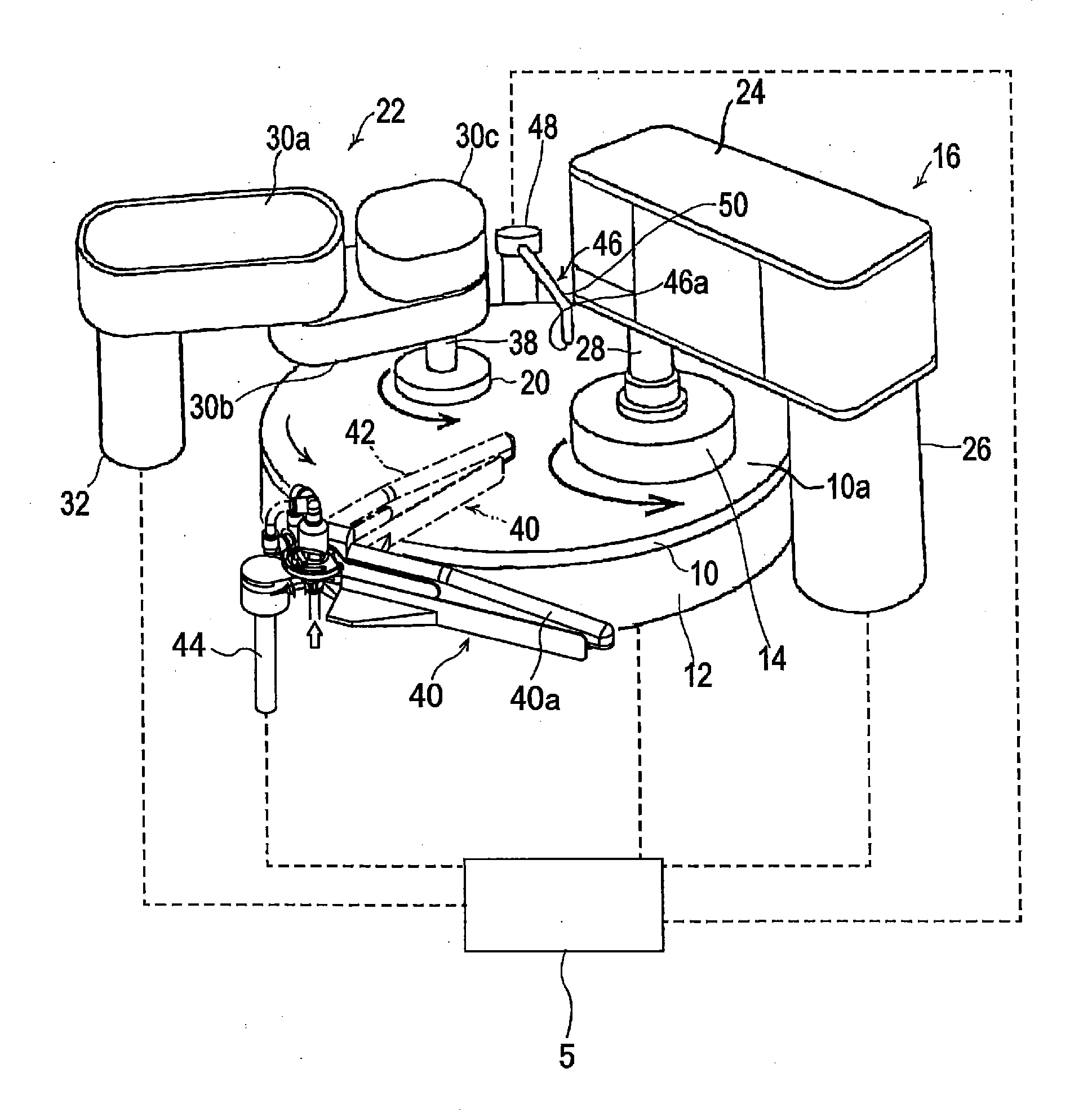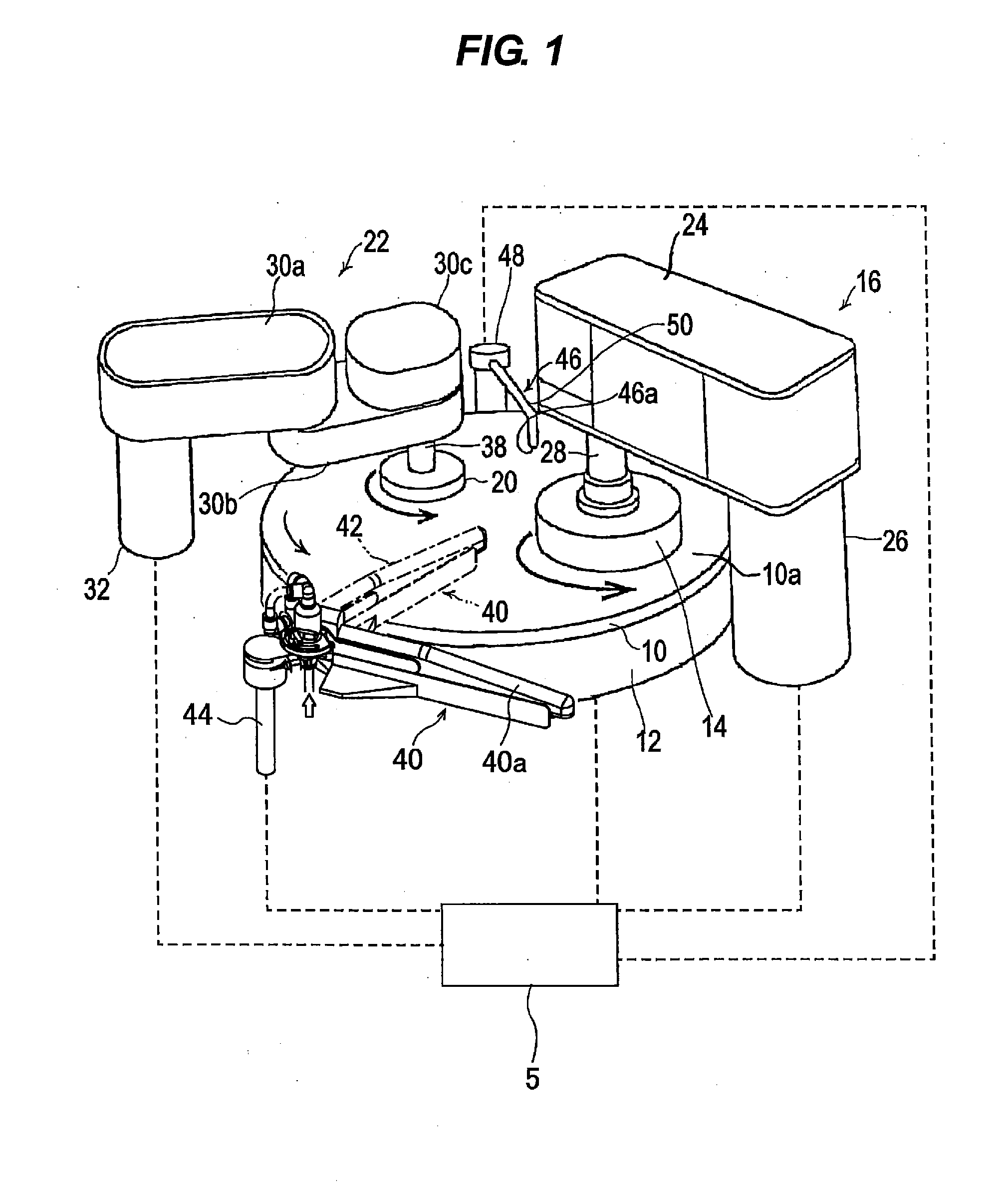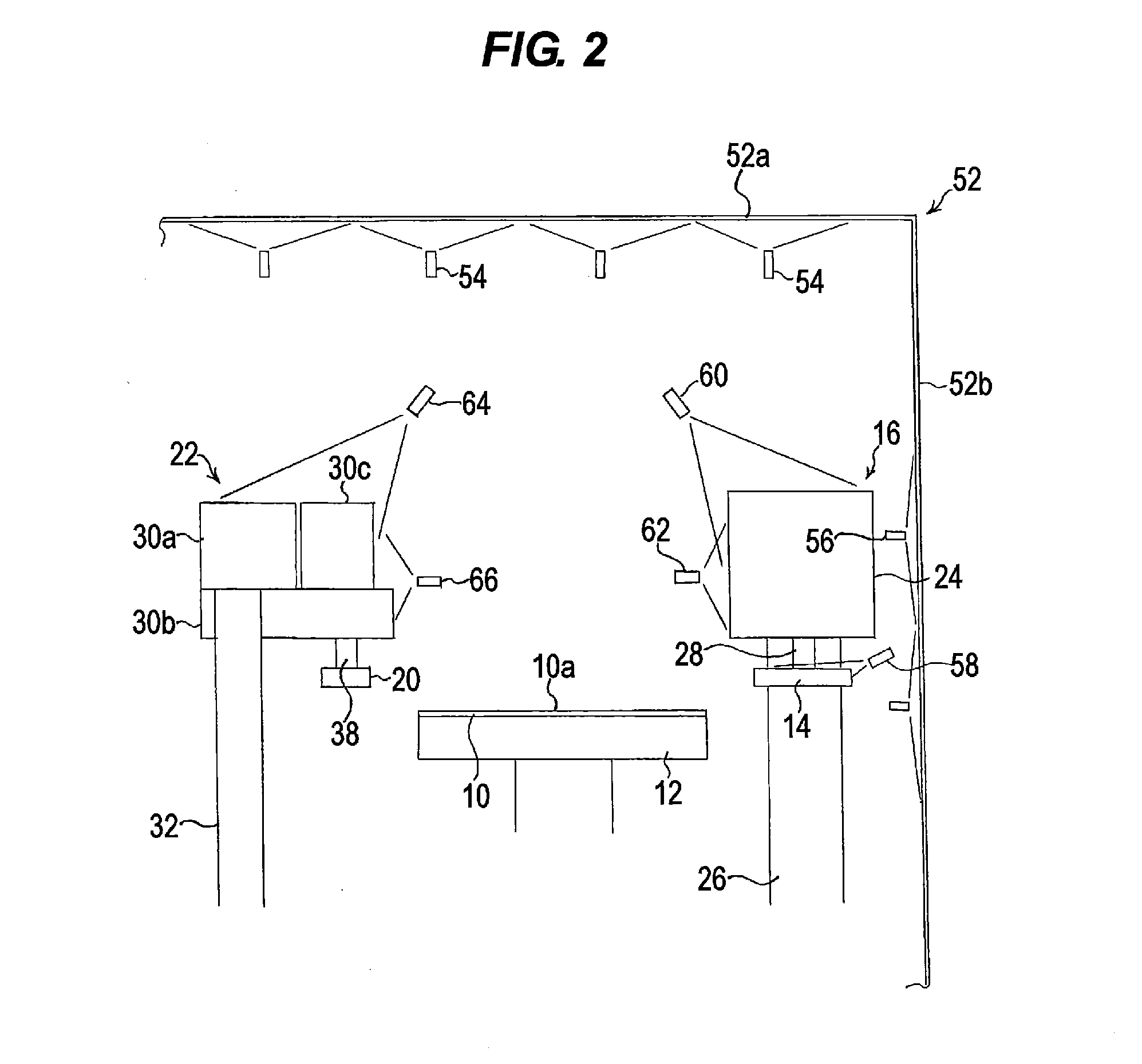Polishing apparatus and polishing method
- Summary
- Abstract
- Description
- Claims
- Application Information
AI Technical Summary
Benefits of technology
Problems solved by technology
Method used
Image
Examples
Embodiment Construction
[0056]Embodiments of the present invention will now be described with reference to the drawings. FIG. 1 is a perspective view of a polishing apparatus according to an embodiment of the present invention. FIG. 1 shows the polishing apparatus when a top ring 14 is in a polishing position above a polishing table 12 and a dresser 20 is in a dressing position above the polishing table 12. Depiction of spray nozzles is omitted in FIG. 1.
[0057]As shown in FIG. 1, the polishing apparatus includes a polishing pad 10 whose upper surface serves as a polishing surface 10a, a polishing table 12 with the polishing pad 10 attached to an upper surface thereof, a top ring head 16 having a top ring 14 for bringing a substrate (polishing object), such as a wafer, into sliding contact with the polishing surface (upper surface) 10a of the polishing pad 10 to polish the substrate, and a dresser head 22 having a dresser 20 for conditioning (or dressing) the polishing surface 10a of the polishing pad 10. T...
PUM
 Login to View More
Login to View More Abstract
Description
Claims
Application Information
 Login to View More
Login to View More - R&D
- Intellectual Property
- Life Sciences
- Materials
- Tech Scout
- Unparalleled Data Quality
- Higher Quality Content
- 60% Fewer Hallucinations
Browse by: Latest US Patents, China's latest patents, Technical Efficacy Thesaurus, Application Domain, Technology Topic, Popular Technical Reports.
© 2025 PatSnap. All rights reserved.Legal|Privacy policy|Modern Slavery Act Transparency Statement|Sitemap|About US| Contact US: help@patsnap.com



